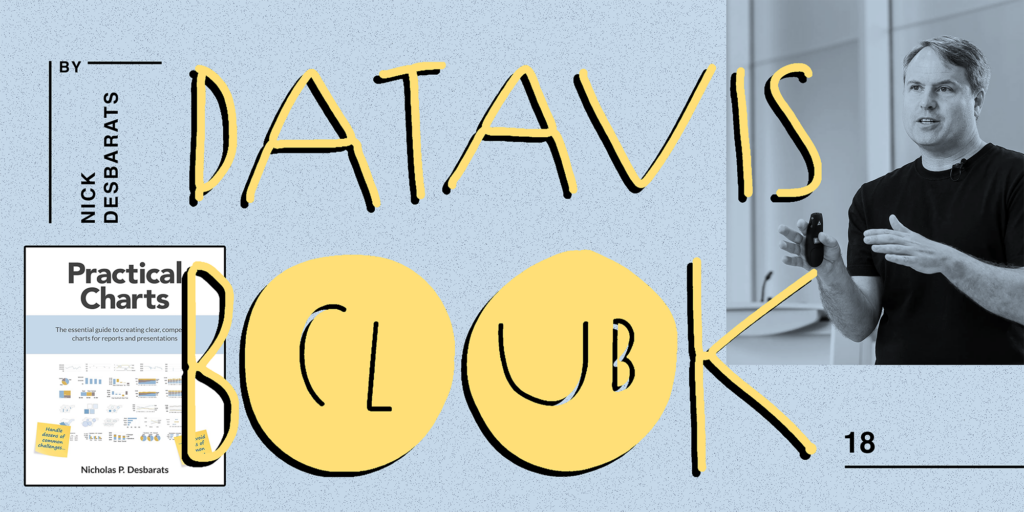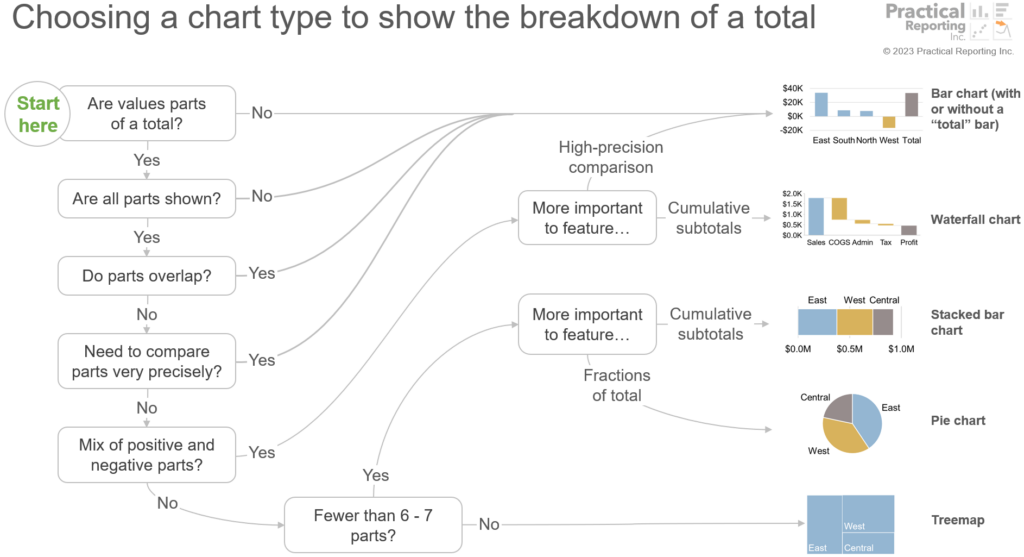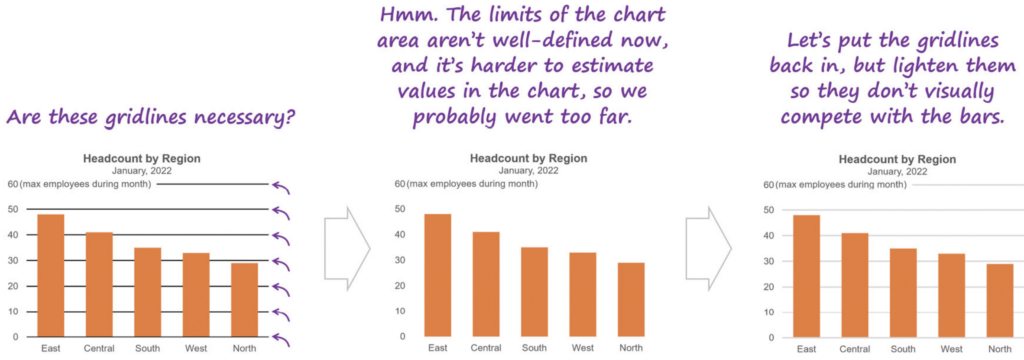Read “How to lie with maps” by Mark Monmonier with us!
January 29th, 2025
6 min
This article is brought to you by Datawrapper, a data visualization tool for creating charts, maps, and tables. Learn more.

Do you keep getting recommendations for data vis books, maybe even buying them, but then don’t make it a priority to read them? Let’s get more out of these books by reading and discussing them together in the Data Vis Book Club. Here’s what we’ll read next — join us!
We’re very excited to announce the next book for our book club: “Practical Charts” by Nick Desbarats, data visualization educator and author.
We’ll discuss Practical Charts on Monday, December 9th at 5 p.m. UTC here: https://notes.dw.tools/p/practical-charts
That’s 9 a.m. on the U.S. West Coast; 11 a.m. in Chicago; 12 p.m. in Peru and the U.S. East Coast; 2 p.m. in Brazil and Argentina; 5 p.m. for readers in the U.K.; 6 p.m. for most Europeans and West Africans; and 10:30 p.m. in India.
Nick Desbarats himself will join us around 45 minutes into the discussion to answer all our questions.
As always, everyone is welcome to join! Just open the notepad at the correct date and time and start typing. Many participants will be new to the conversation — we’ll figure it out as we go.
Nick Desbarats is an independent data visualization educator. After teaching Stephen Few’s foundational courses on data visualization to thousands of professionals, Nick started his own workshop series and wrote “Practical Charts” (2023) and “More Practical Charts” (2024).
That’s fortunate for us: With “Practical Charts,” Nick has created a book that aims to give very specific and complete advice, while still being approachable and friendly. Expect a fairly quick read with the occasional “IMHO” and “Nope,” boxes highlighting key takeaways, and lots of illustrations to help you understand his guidelines.

What does it teach? How to choose a chart type (with very detailed decision trees!), how to make a chart more readable (like by choosing better colors, adding comparison values, or explicitly stating insights), and everything there is to know about scales, axes, and legends.
If you work with data and need to communicate it clearly to others, this book is for you — whether your medium is journalism, marketing presentations, or reports for research, sales, accounting, or healthcare. (You’re more interested in data art? Just sit this one out.)
It’s a great book for absolute data vis beginners: It will teach you how to create good charts using do’s and dont’s and plenty of illustrations. It’s also very practical: Expect little boring theory and lots of concrete advice.

Should you read it if you’re already more experienced when it comes to creating charts? Nick would say yes: “I’d still honestly recommend reading this book first because most of the basic concepts and guidelines that are covered here apply to more specialized types of charts, as well.”
You can find more information about Nick’s book on his website.
1. You get yourself a copy of “Practical Charts.” For this book club session, Nick has specially created a 20% discount code that will automatically apply at checkout here.
2. We all read the book. This is where the fun begins! Please mention @datavisclub on X (Twitter) or use the hashtag #datavisclub if you want to share your process, insights, and surprises — I’ll make sure to tweet them out from @datavisclub as motivation for us all. Don’t worry about reading every word of the book! Start with the chapters that most appeal to you and see how far you get.
3. We get together to talk about the book. This will happen digitally on Monday, December 9th at 5 p.m. UTC over at https://notes.dw.tools/p/practical-charts.
It won’t be a call or a video chat; we’ll just write down our thoughts. The discussion will be structured into three questions:
During the conversation, I’ll ask these three questions in the following order:
1. What was your general impression of the book? Would you recommend it? To whom?
2. What was most inspiring, insightful, or surprising? What did you learn that you didn’t expect to?
3. Having read the book, what stuck with you — the thing you’ll pay attention to next time you’re looking at diagrams in a scientific paper or magazine?
Feel free to prepare your answers in 1-2 sentences and paste them into the notes once I ask each question. If you can’t find the time to prepare anything, just come by and chat — we’ll quickly get into discussion mode.
After discussing these three questions for about 45 minutes, Nick will join us to answer questions we might have about his book.
Here’s a short FAQ!
A digital book club is a new experience for many of us. This is what our book club discussions have looked like in the past:

You can also read the review of the first book club, to learn how people found the experience.
This is what others have said about past book club discussions:
Because it works well for introverts and for people who prefer to stay anonymous in the discussion. Plus, native English speakers have less of an advantage than they have in calls. Plus, the documentation of our meeting writes itself.
Do you have a lunch date? Vacation? Need to put the kids to bed? Need to sleep yourself? No problem! The conversation will be archived in the notes and can still be continued over the following days.
You can either subscribe to our Datawrapper Blog Update newsletter or turn on notifications for our Twitter account. I explain both options in more detail here.
I’m looking forward to reading through “Practical Charts” with all of you. If you have any questions, write them in the comments or send them to guillermina@datawrappper.de or to Guillermina / Datawrapper on X (Twitter). Also, make sure to follow @datavisclub to stay up-to-date and get a dose of motivation from time to time. I’ll see you in December!
Comments